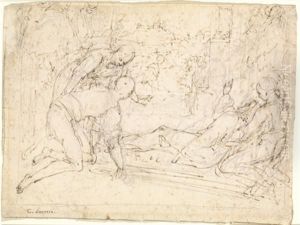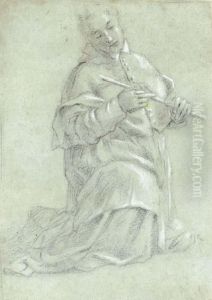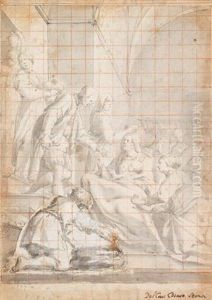Cesare Sermei Paintings
Cesare Sermei was an Italian painter of the Baroque period, born in 1584 in Orvieto, a small city in Umbria, Italy. He is not as widely known as some of his contemporaries, but he made significant contributions to the art of his region and era. His artistic journey reflects the broader trends and transformations taking place in Italian art during the 17th century.
Sermei initially trained in his hometown, but like many artists of the time, he traveled to Rome to study. There, he became influenced by the works of Caravaggio and the Caravaggisti, artists who followed Caravaggio's style, which was characterized by dramatic use of light and shadow, as well as a focus on realism and the emotional states of subjects. Sermei was also influenced by the work of the Carracci family, who were pivotal in the development of Baroque painting with their more classical and harmonious approach.
Throughout his career, Cesare Sermei worked on various commissions for churches and patrons in Umbria and beyond. He painted altarpieces, frescoes, and other religious works, adapting his style to the evolving tastes of the period. His paintings often featured religious and mythological subjects, presented with a sense of dynamism and theatricality that was typical of the Baroque era.
Sermei's work is characterized by its vivid color palette and attention to detail. His paintings often exhibit a strong sense of movement and energy, with figures positioned in complex, dynamic compositions. Although he may not have achieved the fame of the leading lights of the Baroque movement, his work was nonetheless appreciated by his contemporaries, and he enjoyed a successful career.
Sermei's legacy is preserved in the works he left behind, many of which can still be seen in situ in churches and galleries in Orvieto and other locations in Italy. His contributions to the Baroque movement in Umbria are recognized by art historians, and his paintings are studied for their embodiment of the transitional styles between the late Renaissance and Baroque periods.
Cesare Sermei died in 1668 in Orvieto. His life and work remain a testament to the rich tapestry of Italian Baroque painting, capturing the spiritual and artistic fervor of the Counter-Reformation era.


